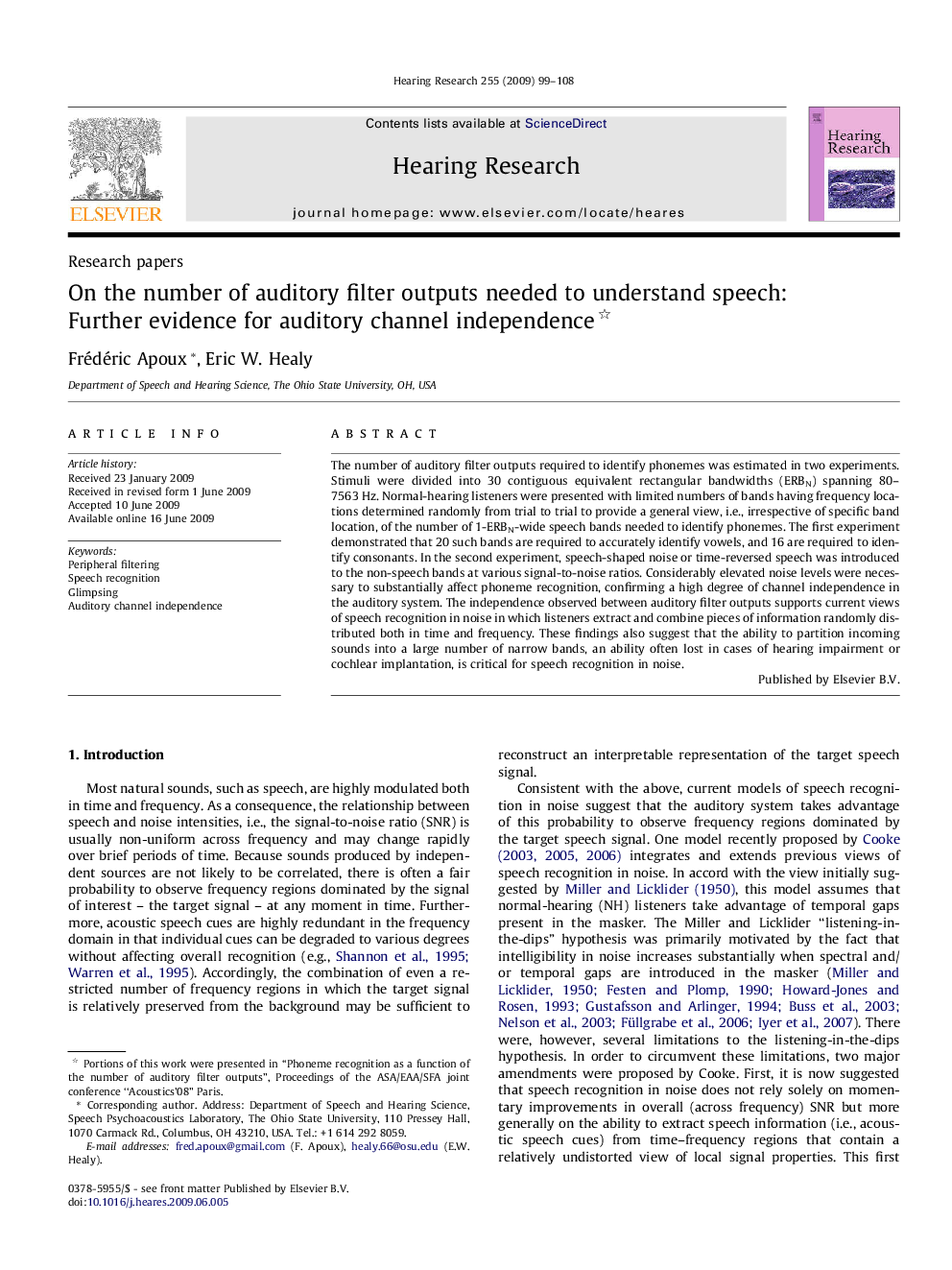| Article ID | Journal | Published Year | Pages | File Type |
|---|---|---|---|---|
| 4355869 | Hearing Research | 2009 | 10 Pages |
The number of auditory filter outputs required to identify phonemes was estimated in two experiments. Stimuli were divided into 30 contiguous equivalent rectangular bandwidths (ERBN) spanning 80–7563 Hz. Normal-hearing listeners were presented with limited numbers of bands having frequency locations determined randomly from trial to trial to provide a general view, i.e., irrespective of specific band location, of the number of 1-ERBN-wide speech bands needed to identify phonemes. The first experiment demonstrated that 20 such bands are required to accurately identify vowels, and 16 are required to identify consonants. In the second experiment, speech-shaped noise or time-reversed speech was introduced to the non-speech bands at various signal-to-noise ratios. Considerably elevated noise levels were necessary to substantially affect phoneme recognition, confirming a high degree of channel independence in the auditory system. The independence observed between auditory filter outputs supports current views of speech recognition in noise in which listeners extract and combine pieces of information randomly distributed both in time and frequency. These findings also suggest that the ability to partition incoming sounds into a large number of narrow bands, an ability often lost in cases of hearing impairment or cochlear implantation, is critical for speech recognition in noise.
